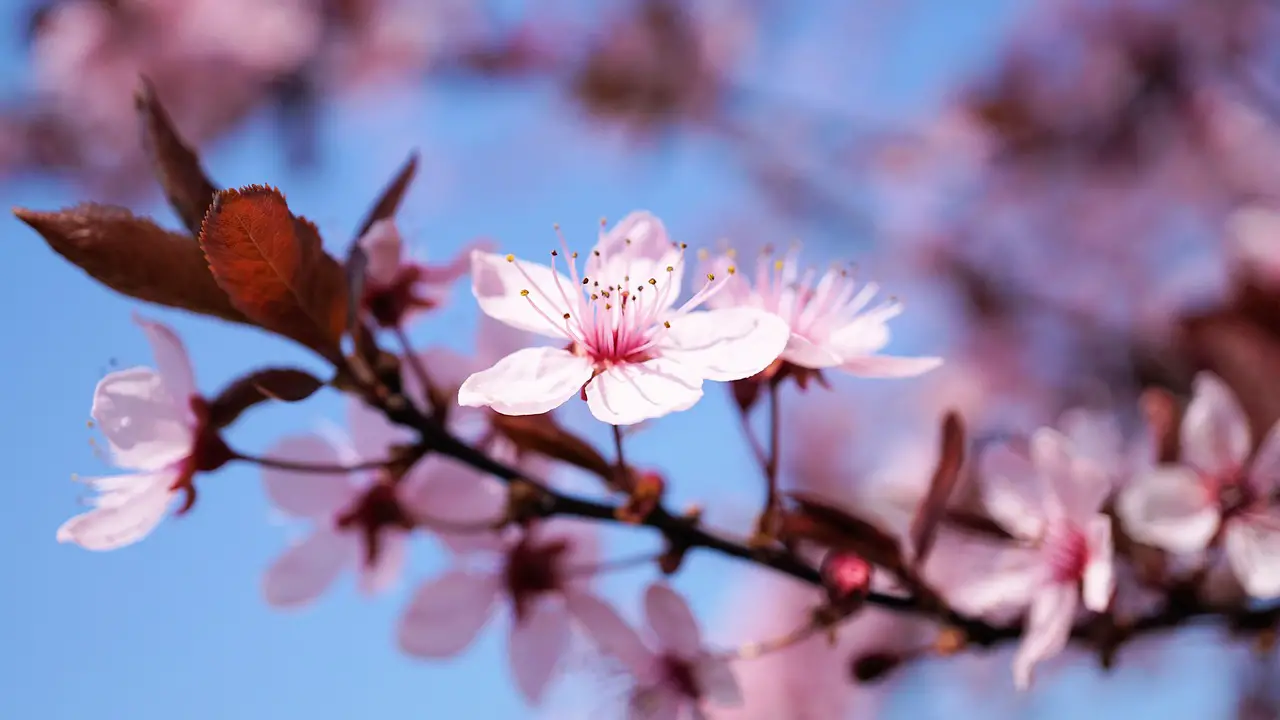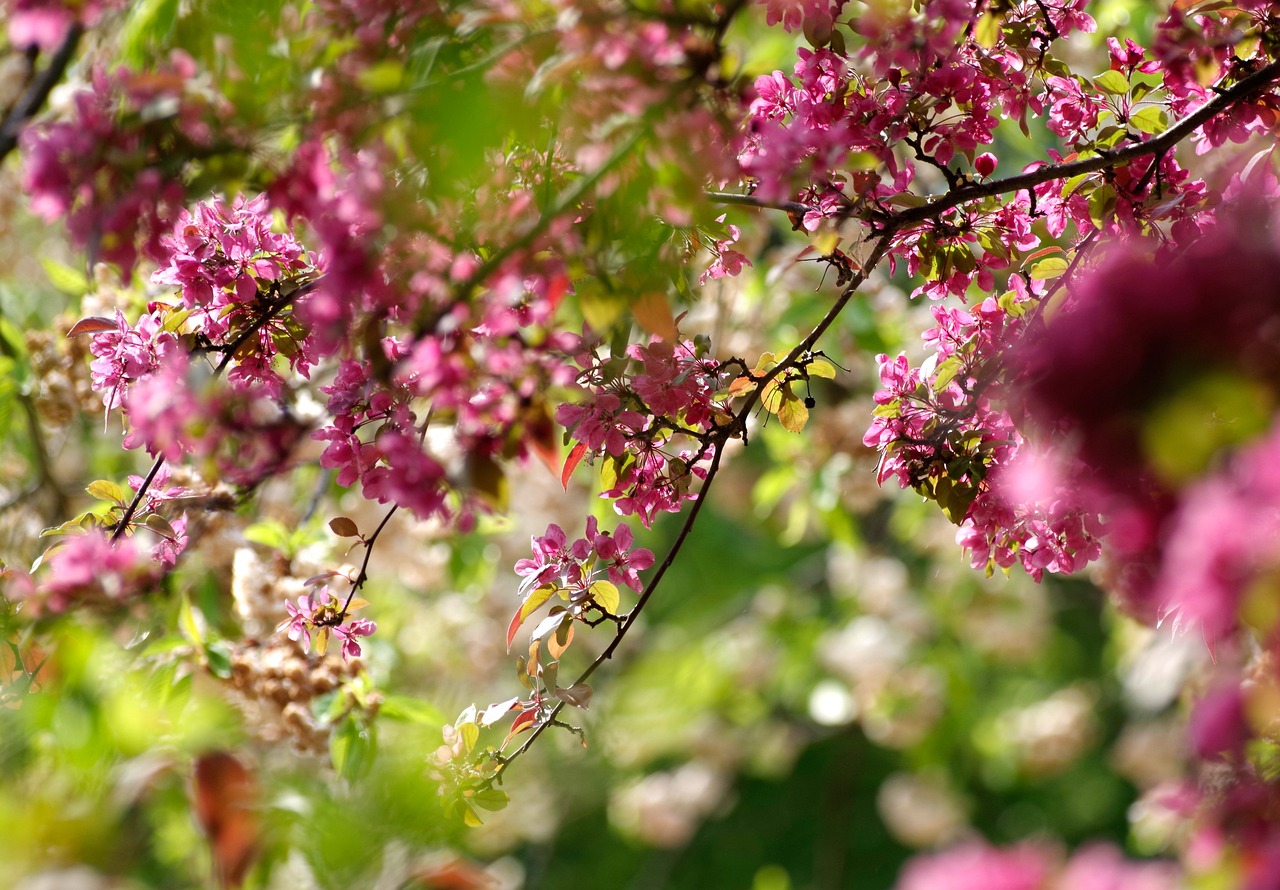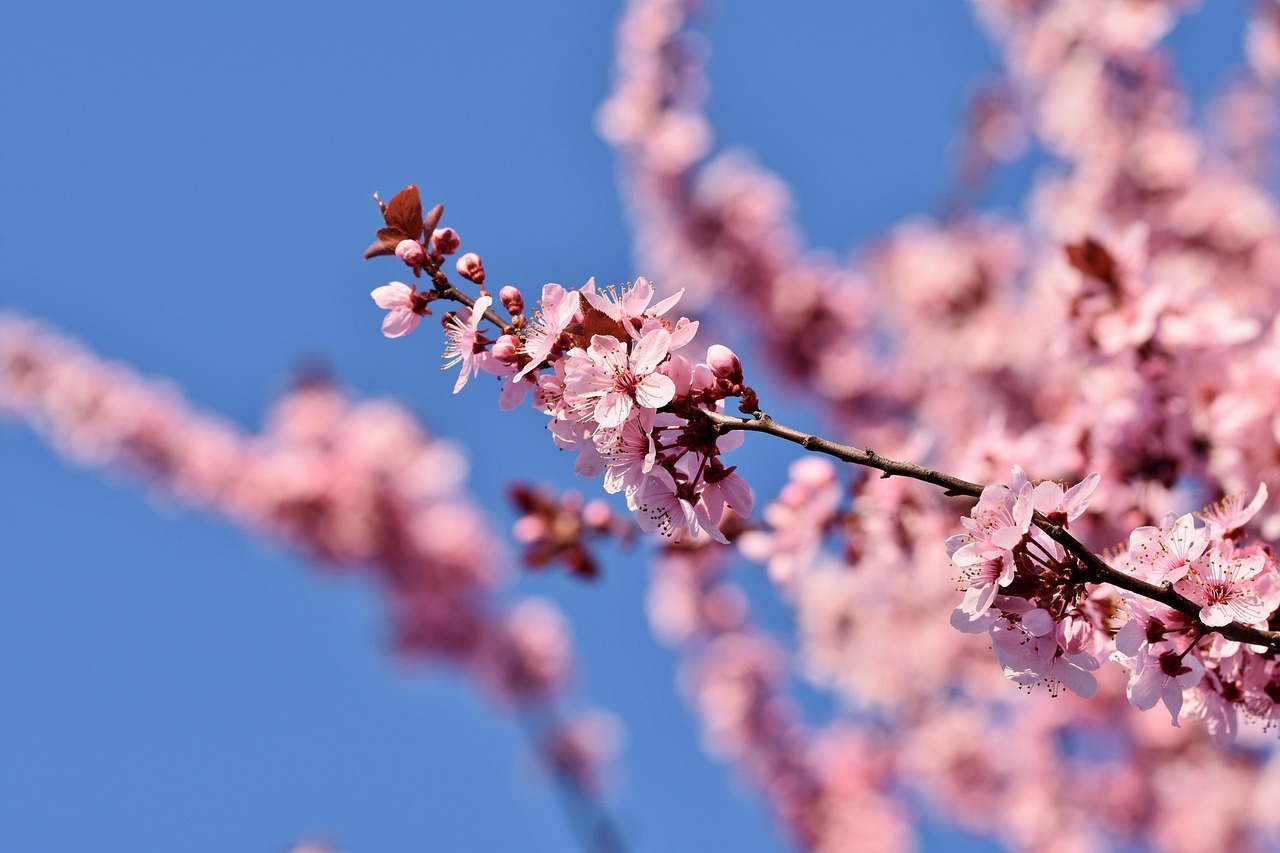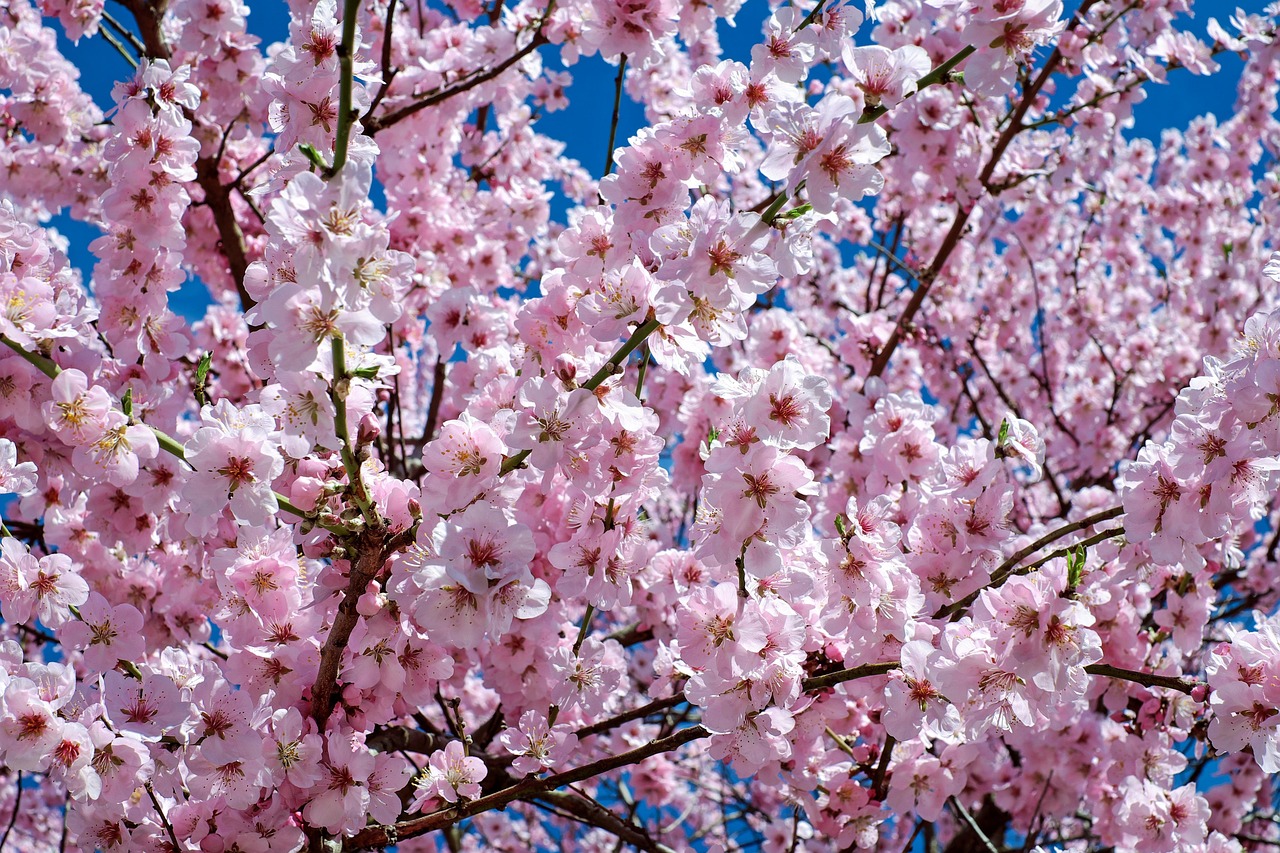The Black Cherry tree (Prunus serotina) exhibits a moderate growth rate, typically ranging from 1 to 2 feet per year in North American woodlands. Factors such as soil quality, sunlight, and competition with other trees can influence this rate significantly.
Understanding the Black Cherry Tree
The Black Cherry tree is a native species found across the eastern United States and parts of Canada. Its scientific name, Prunus serotina, reflects its late-maturing fruit, which becomes ripe in late summer or early fall. Known for its beautiful bark and fragrant flowers, the Black Cherry tree plays a significant role in forest ecosystems and is highly valued for its timber.

This tree can grow up to 80 feet tall and often develops a broad, rounded canopy. The leaves are typically dark green, turning a vibrant yellow or red in the fall. The flowers are small and white, growing in clusters and attracting various pollinators.
Growth Conditions
The growth rate of the Black Cherry tree is influenced by several environmental conditions. These include:
- Soil Quality: Well-drained, loamy soils rich in organic matter promote healthy growth.
- Sunlight: Full sun exposure is ideal for optimal growth. Black Cherry trees thrive in open areas with plenty of light.
- Water Availability: While they are somewhat drought-tolerant, consistent moisture during the growing season can enhance growth rates.
- Competition: The presence of larger trees can limit the growth of Black Cherry trees due to competition for resources.
Growth Stages
The growth of the Black Cherry tree can be broken down into several key stages:

- Seedling Stage: This initial stage lasts for about 1 to 3 years. Seedlings require adequate moisture and protection from herbivores to thrive.
- Juvenile Stage: From years 3 to 10, the tree begins to establish itself. Growth rates increase as the tree develops a stronger root system.
- Mature Stage: After approximately 10 years, the tree reaches maturity. Its growth rate stabilizes, typically averaging 1 to 2 feet per year.
- Old Age Stage: Black Cherry trees can live up to 100 years. Growth may slow down significantly as they age.
Importance in Ecosystems
The Black Cherry tree provides numerous ecological benefits. Its fruits are a food source for many birds and mammals, while the flowers attract various pollinators, including bees. The tree also contributes to soil health through leaf litter that enriches the forest floor.
In addition to its ecological importance, Black Cherry wood is highly sought after for furniture making and cabinetry. The wood is known for its rich color and fine grain, making it a preferred choice among craftsmen. This demand has led to sustainable harvesting practices that help ensure the longevity of Black Cherry populations in North American woodlands.
Challenges to Growth
Despite its many advantages, the Black Cherry tree faces several challenges that can affect its growth rate and overall health:

- Diseases: Fungal infections like cherry leaf spot can hinder growth and reduce leaf health.
- Pests: Insect pests such as the cherry fruit fly can impact fruit production, making trees less viable.
- Climate Change: Changes in climate patterns can affect growth rates due to altered precipitation and temperature conditions.
Understanding these factors is essential for managing Black Cherry populations effectively. Monitoring their growth and health can lead to better conservation efforts in North American woodlands.
Factors Influencing Growth Rate
Understanding the growth rate of the Black Cherry tree requires examining various factors that influence its development in North American woodlands. Each aspect, from environmental conditions to human intervention, plays a critical role in shaping how quickly these trees can grow.
Soil Composition
The composition of the soil is vital for the growth of Black Cherry trees. Nutrient-rich soils allow for better root development and overall health. Key components affecting soil quality include:

- pH Level: Black Cherry trees prefer slightly acidic to neutral pH levels, typically between 6.0 and 7.0. Soil that is too acidic or alkaline can hinder nutrient uptake.
- Organic Matter: The presence of organic material enhances soil fertility, providing essential nutrients and improving water retention.
- Drainage: Well-drained soils are crucial. Poor drainage can lead to root rot and other diseases.
Light Requirements
Light availability significantly impacts the growth rate of Black Cherry trees. These trees thrive in full sunlight, which enables them to photosynthesize effectively. Factors related to light include:
- Canopy Cover: Areas with dense canopy cover may limit sunlight access, thus slowing growth rates.
- Spacing: Proper spacing between trees ensures that each receives adequate light, allowing for optimal growth.
- Seasonal Variation: Seasonal changes in sunlight can influence growth cycles, with spring and summer being critical for development.
Water Availability
Water is another essential factor affecting the growth rate of Black Cherry trees. Adequate moisture is necessary for various physiological processes like photosynthesis and nutrient transport. Key points include:
- Moisture Levels: Consistent soil moisture is ideal, especially during the growing season. Drought conditions can stress the tree, leading to reduced growth.
- Irrigation Practices: In areas where natural rainfall is insufficient, irrigation can be beneficial. However, overwatering should be avoided to prevent root diseases.
- Water Table: The proximity of the water table can influence the tree’s ability to access moisture. Shallow water tables can support healthy growth.
Impact of Wildlife
Wildlife interactions also play a significant role in the growth of Black Cherry trees. Various species can either positively or negatively affect these trees:
- Pollinators: Bees and other pollinators are essential for fruit production, which helps in seed dispersal and genetic diversity.
- Herbivores: Animals such as deer may feed on young saplings, which can severely limit their growth potential. Protective measures may be needed in areas with high herbivore populations.
- Pest Species: Certain insects, while harmful, may also attract beneficial predators that help control pest populations.
Human Influence on Growth Rates
The way humans manage forests can have profound effects on the growth rates of Black Cherry trees. Practices such as selective logging and land management strategies can either promote or hinder growth:
Sustainable Forestry Practices
Sustainable forestry practices aim to balance ecological health with economic needs. These practices include:
- Selective Logging: Removing mature trees allows younger Black Cherry trees to receive more sunlight and resources, promoting their growth.
- Controlled Burns: Fire management techniques can clear underbrush and promote new growth in saplings.
- Reforestation Efforts: Planting Black Cherry saplings in deforested areas aids in restoring ecosystems and maintaining biodiversity.
Urbanization Effects
Urbanization poses challenges to the natural growth of Black Cherry trees. Urban development often leads to habitat loss and fragmentation. Key impacts include:
- Pavement and Infrastructure: Construction reduces available land for trees to grow and compete for resources.
- Pesticide Use: Chemicals used in urban landscaping can harm not only pests but also beneficial insects that aid in pollination.
- Disease Spread: Increased human activity can introduce diseases that affect tree health in urban environments.
A comprehensive understanding of these factors is crucial for conserving Black Cherry populations and ensuring their continued growth in North American woodlands.
Ecological Benefits of Black Cherry Trees
The Black Cherry tree is not only valued for its timber but also provides a range of ecological benefits that contribute to the health of North American woodlands. Understanding these benefits can highlight the importance of preserving and cultivating this species.
Wildlife Habitat
Black Cherry trees contribute significantly to the habitat needs of various wildlife species. They serve as shelter and food sources for many organisms:
- Bird Species: The fruit of the Black Cherry tree attracts birds like robins, woodpeckers, and thrushes, which feed on the berries.
- Mammals: Animals such as deer and raccoons also enjoy the fruit and may seek shelter in the tree’s canopy.
- Insects: The flowers attract pollinators, including bees, butterflies, and other beneficial insects that play an essential role in pollination.
Soil Health Enrichment
The presence of Black Cherry trees can enhance soil health in forest ecosystems. They contribute to nutrient cycling and improve soil structure:
- Leaf Litter: The fallen leaves decompose and enrich the soil with organic matter, enhancing nutrient availability for other plants.
- Root Systems: The roots of Black Cherry trees help stabilize the soil, reducing erosion and promoting water retention.
- Mycorrhizal Associations: Black Cherry trees often form beneficial relationships with mycorrhizal fungi, which assist in nutrient absorption and improve overall soil health.
Cultural Significance
The Black Cherry tree holds cultural significance for various communities. Its wood is not only valuable for commercial purposes but also has historical and cultural importance:
Historical Uses
Natives and early settlers in North America recognized the value of Black Cherry trees:
- Traditional Medicine: Native American tribes utilized parts of the tree for medicinal purposes, such as making teas from the bark to treat coughs and colds.
- Crafts and Tools: The hard wood was used to create tools, utensils, and canoes due to its durability.
- Cultural Symbolism: The tree has been featured in folklore and stories, symbolizing strength and resilience.
Modern-Day Applications
Today, the Black Cherry tree continues to be important for various contemporary applications:
- Furniture Making: The rich color and fine grain make Black Cherry wood a sought-after material for high-quality furniture.
- Musical Instruments: Its acoustic properties are valued in the production of musical instruments, including pianos and guitars.
- Aesthetic Landscaping: Due to its attractive flowers and fall foliage, Black Cherry trees are often used in landscaping and urban planning.
Propagation and Cultivation Techniques
The successful propagation and cultivation of Black Cherry trees are essential for ensuring their growth in woodlands. Various techniques can be employed to promote healthy growth:
Seed Propagation
The most common method of propagating Black Cherry trees is through seed. Here are the steps involved:
- Seed Collection: Collect ripe fruits in late summer or early fall when they turn dark purple.
- Seed Extraction: Remove the seeds from the fruit. Clean them thoroughly to eliminate any remaining pulp.
- Cold Stratification: To break dormancy, seeds should be cold-stratified by placing them in a moist medium in a refrigerator for about 90 days.
- Sowing Seeds: After stratification, sow seeds in well-drained soil during spring, ensuring they are lightly covered.
Vegetative Propagation
In addition to seed propagation, vegetative methods can also be effective:
- Cuttings: Take cuttings from healthy branches during the growing season. Use rooting hormone to encourage root development.
- Suckering: Black Cherry trees can produce suckers from their roots. These can be dug up and transplanted to new locations.
- Grafting: Grafting techniques can be used to propagate desired cultivars while retaining specific traits.
Utilizing these techniques can enhance the establishment of Black Cherry trees in various environments, ensuring their growth rates remain robust in North American woodlands.
Additional Considerations for Black Cherry Tree Management
In addition to propagation techniques, several management practices can enhance the growth and health of Black Cherry trees in North American woodlands. These practices focus on maintaining optimal conditions and mitigating risks associated with environmental stressors.
Pest and Disease Management
Effective management of pests and diseases is vital for promoting healthy growth rates in Black Cherry trees. Here are several preventative measures:
- Regular Monitoring: Conduct regular inspections to identify early signs of pest infestations or diseases. Early detection can facilitate timely interventions.
- Integrated Pest Management (IPM): Utilize IPM strategies that combine biological control, cultural practices, and chemical treatments in a way that minimizes harm to beneficial insects.
- Healthy Practices: Maintain tree health through proper watering, fertilization, and pruning, which can help trees resist pests and diseases.
Fertilization Practices
Fertilization can play a significant role in supporting the growth of Black Cherry trees. The following practices are beneficial:
- Soil Testing: Conduct soil tests to determine nutrient levels and pH before applying fertilizers. This ensures that the right nutrients are provided in the correct amounts.
- Organic Fertilizers: Consider using organic fertilizers such as compost or well-rotted manure, which can enhance soil health while providing necessary nutrients.
- Timing: Apply fertilizers in early spring before the growing season begins, allowing trees to absorb nutrients effectively during active growth.
Watering Techniques
Water management is crucial for the growth of Black Cherry trees, especially during dry periods. Consider the following methods:
- Deep Watering: Water deeply but infrequently to encourage deep root growth. This helps trees access moisture during dry spells.
- Mulching: Use organic mulch around the base of trees to retain soil moisture, regulate temperature, and suppress weeds.
- Irrigation Systems: In areas prone to drought, consider installing irrigation systems that can provide consistent moisture without waterlogging the roots.
Final Thoughts
The Black Cherry tree is an essential component of North American woodlands, contributing significantly to ecological health and offering numerous benefits for wildlife and humans alike. Understanding its growth rate and the factors influencing it is key to ensuring its sustainability.
From its role in supporting diverse wildlife to its cultural significance and economic value, the Black Cherry tree stands out as a vital species. By employing effective propagation techniques, management practices, and conservation efforts, we can promote healthy Black Cherry populations, ensuring they thrive for future generations.
The ongoing challenges posed by urbanization, climate change, pest pressures, and disease highlight the need for proactive measures to protect this valuable tree. Engaging communities in conservation efforts and fostering an appreciation for the natural environment can lead to better outcomes for Black Cherry trees and the ecosystems they support.
In summary, the growth rate of Black Cherry trees is influenced by a complex interplay of environmental factors, human activity, and management practices. Through education and commitment to sustainable practices, we can help preserve this remarkable species, ensuring its continued presence in North American woodlands.
